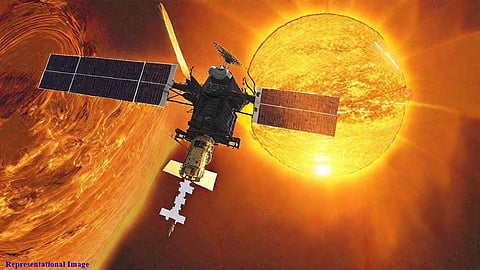

India's Aditya-L1 solar probe reached its destination on January 6, covering 15 lakh kilometres in space over 126 days and executing precise manoeuvres. Prime Minister Narendra Modi announced the success of Aditya-L1, launched on September 2, now positioned at Lagrangian Point 1, granting an uninterrupted view of the sun. This unique vantage point enables the study of space weather triggered by solar storms.
First Indian Space-based Solar Observatory
Aditya-L1 is India's first space-based solar observatory, dedicated to studying the Sun. According to ISRO officials, Aditya-L1 will be in a halo orbit around Lagrange point 1 (L1), approximately 1.5 million km from Earth. This orbit offers the advantage of continuous solar observation without occultations or eclipses. The spacecraft carries seven payloads to observe different layers of the Sun, utilising electromagnetic and particle and magnetic field detectors.
Significance of Lagrange Point L1
A satellite in a halo orbit around L1 has a major advantage of continuously viewing the Sun without any occultations or eclipses. This provides real-time observations of solar activities and their effect on space weather.
Scientific Objectives
The Aditya-L1 mission aims to study solar upper atmospheric dynamics, chromospheric and coronal heating, initiation of coronal mass ejections, and physics of partially ionized plasma.
In-situ Studies and Propagation Dynamics
The spacecraft's unique position enables in-situ studies of particles and fields at Lagrange point L1, providing crucial scientific insights into solar dynamics' propagatory effect in the interplanetary medium.
Crucial Information from Payloads
The Aditya L1 payloads are expected to provide crucial information to understand coronal heating, coronal mass ejection, pre-flare and flare activities, dynamics of space weather, and propagation of particles and fields.
Solar Secrets Unveiled
As Aditya-L1 settles into its orbit, it promises to unravel the mysteries of the solar corona, contributing to our understanding of space weather and providing key insights into the complex processes occurring in multiple solar layers.